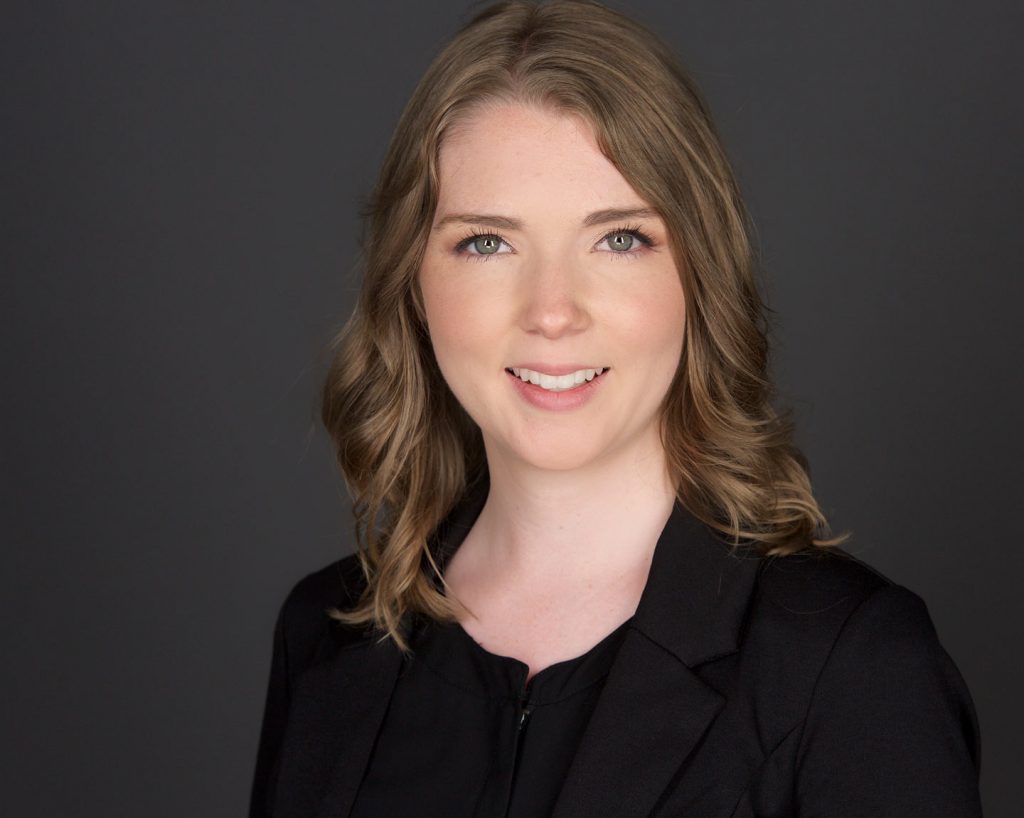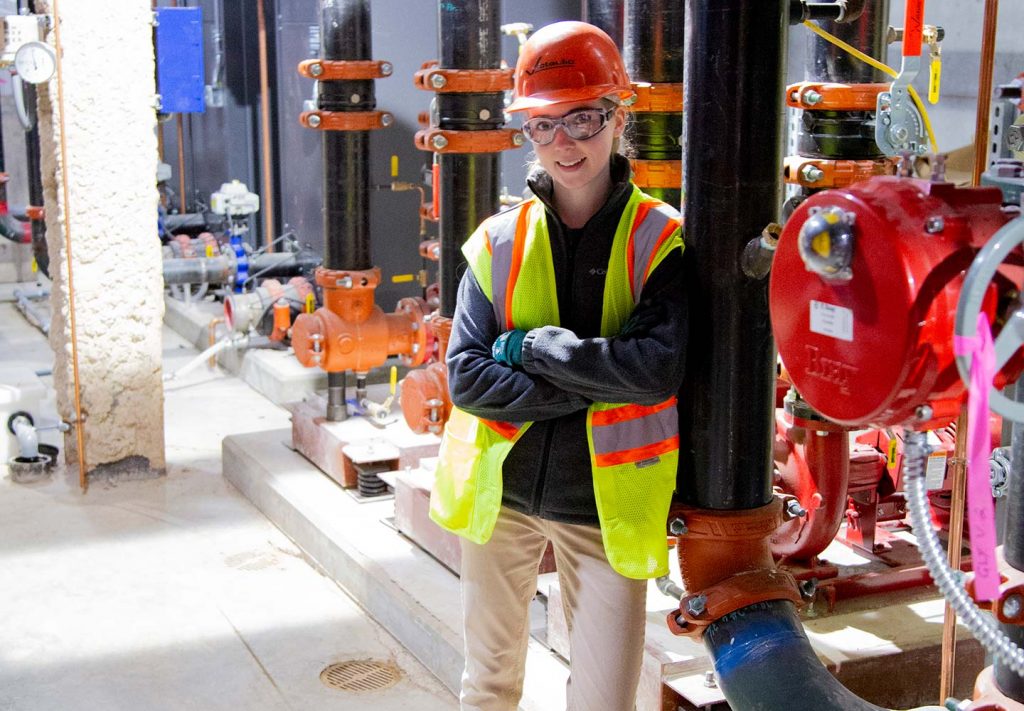By Bryan Hay
Hilary Schmidt ’15 is part of a wave of young women engineers moving into leadership positions and breaking the gender glass ceiling for others to pursue engineering and other STEM fields.
Schmidt (mechanical engineering) joined Victaulic, a worldwide pipe-fitting and coupling company based in Forks Township, right after graduating from Lafayette. She’s moved around in various positions learning about foundry, manufacturing, and planning operations. Now she’s in the global research and development department as a process technology engineer.
She took some time recently to chat about her career and offer advice to Lafayette engineering students as they consider their paths.
When did you discover that engineering was your calling?
My favorite subject was always math, even in elementary school. Once I got to high school, I focused more on engineering. I joined the robotics team, and we actually won our regional competition and were able to go on to the next round of competitions in Atlanta. This was a valuable experience for me because I was able to meet more people with similar interests to me and also see how other teams approached the same tasks outlined by the competition. These experiences definitely heightened my interest in engineering and also led me to choose mechanical engineering at the college level.
 More women have entered engineering over the past several decades, yet they still only make up about 14 percent of employees in that field. What can be done to increase interest among women?
More women have entered engineering over the past several decades, yet they still only make up about 14 percent of employees in that field. What can be done to increase interest among women?
It’s an interesting time. There are more women who are considering engineering, yet there is room for opportunity. We can do better, and should try to expose students at a younger age to career opportunities in STEM. Programs like PA Dream Team, where young professionals make classroom presentations for students ranging from elementary school to high school age, are one way to encourage exploration of the sciences. I wish someone would have done this for me when I was younger. Reaching out to younger kids can make a huge difference.
What kind of work do you do at Victaulic?
My department looks at processes and designs, to try to improve them. Something that’s unusual in this department is that everyone has a different project that ranges from valves and couplings to rubber gaskets. So it gives you an opportunity to learn a lot, which I think is really neat.
What led you to Victaulic?
I interned there and knew others who interned and work here. Everyone spoke highly of Victaulic. I thought I’d give it a chance, and I really loved my internship, which is why I ended up going back to Victaulic after graduation and eventually making my way to the department where I interned. Victaulic champions diversity of thought, and it was encouraging to see many other female engineers here as well. It worked out really well for me.
 How did Lafayette prepare you for your career?
How did Lafayette prepare you for your career?
Lafayette does a really good job at teaching problem-solving. Mechanical engineering is such a broad area of engineering. You learn a little bit of this and that, but when you get into the field it’s so much more in depth. The best thing is having the problem-solving skills, which is something that my department really values.
Any advice for women Lafayette engineers as they consider their career paths?
Be confident! It can be hard to speak up when you’re in a room of all men, especially when they all have more work experience. Unfortunately, this is sometimes the case. If you have a question, ask. If you have a suggestion, say something. It’s a great way to learn from others, and it feels nice to have your voice be heard.
Also, I suggest a few resources. I’ve found the company BossedUp to be a great resource. It was put together by a woman named Emilie Aries. It has podcasts and articles geared toward women in the workplace. It covers difficult situations and provides tips for women who want to meet a career goal. The Society of Women Engineers is another great resource. It has collegiate and professional chapters that provide great networking resources with other female engineers.
 More women have entered engineering over the past several decades, yet they still only make up about 14 percent of employees in that field. What can be done to increase interest among women?
More women have entered engineering over the past several decades, yet they still only make up about 14 percent of employees in that field. What can be done to increase interest among women? How did Lafayette prepare you for your career?
How did Lafayette prepare you for your career?